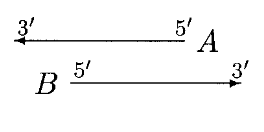GLIMMER
GLIMMER (Gene Locator and Interpolated Markov ModelER) is a system for finding genes in microbial DNA, especially the genomes of bacteria, archaea, and viruses. GLIMMER uses interpolated Markov models (IMMs) to identify the coding regions and distinguish them from non-coding DNA. The software is highly accurate and one of the most widely used tools for gene prediction in microbial genomes.
Overview[edit | edit source]
The primary function of GLIMMER is to identify the open reading frames (ORFs) that are likely to constitute genes in a given microbial DNA sequence. It does this by analyzing the sequence with a series of interpolated Markov models that have been trained on known gene sequences. These models are capable of capturing the complex statistical patterns of coding regions, such as the specific biases in codon usage and the typical lengths of genes.
History[edit | edit source]
GLIMMER was developed by researchers at The Institute for Genomic Research (TIGR) and has undergone several updates since its initial release. The first version was introduced to address the need for efficient and accurate gene prediction tools that could keep pace with the rapidly increasing volume of genomic data from various microorganisms. Subsequent versions have improved on the accuracy, speed, and usability of the system.
How GLIMMER Works[edit | edit source]
GLIMMER operates in three main stages: 1. Initial Training Phase: The software first identifies a set of potential genes in the DNA sequence using a simple set of rules based on known gene characteristics. 2. Model Training: Using the initial set of genes, GLIMMER trains its interpolated Markov models to refine its understanding of what constitutes a gene in the specific genome being analyzed. 3. Gene Prediction: With the trained models, GLIMMER then re-analyzes the entire genome sequence to identify genes with high confidence.
Applications[edit | edit source]
GLIMMER has been used in the annotation of thousands of microbial genomes. It is particularly useful in the early stages of genome analysis, providing a reliable set of gene predictions that can be further refined and annotated with functional information. GLIMMER's predictions are often used as a starting point for more detailed bioinformatics analyses and experimental validation studies.
Advantages[edit | edit source]
- High Accuracy: GLIMMER is known for its high accuracy in predicting genes, especially in bacterial and archaeal genomes. - Speed: It can process entire microbial genomes in a matter of minutes, making it suitable for large-scale genomic analyses. - Flexibility: GLIMMER can be trained on any new genome, allowing it to adapt to the unique characteristics of any microbial DNA sequence.
Limitations[edit | edit source]
- While highly effective for microbial genomes, GLIMMER is not designed for use with the more complex genomes of eukaryotes, which have larger genes interspersed with introns. - The accuracy of GLIMMER's predictions can depend on the quality of the initial training data, which may vary between different organisms.
See Also[edit | edit source]
Search WikiMD
Ad.Tired of being Overweight? Try W8MD's physician weight loss program.
Semaglutide (Ozempic / Wegovy and Tirzepatide (Mounjaro / Zepbound) available.
Advertise on WikiMD
|
WikiMD's Wellness Encyclopedia |
| Let Food Be Thy Medicine Medicine Thy Food - Hippocrates |
Translate this page: - East Asian
中文,
日本,
한국어,
South Asian
हिन्दी,
தமிழ்,
తెలుగు,
Urdu,
ಕನ್ನಡ,
Southeast Asian
Indonesian,
Vietnamese,
Thai,
မြန်မာဘာသာ,
বাংলা
European
español,
Deutsch,
français,
Greek,
português do Brasil,
polski,
română,
русский,
Nederlands,
norsk,
svenska,
suomi,
Italian
Middle Eastern & African
عربى,
Turkish,
Persian,
Hebrew,
Afrikaans,
isiZulu,
Kiswahili,
Other
Bulgarian,
Hungarian,
Czech,
Swedish,
മലയാളം,
मराठी,
ਪੰਜਾਬੀ,
ગુજરાતી,
Portuguese,
Ukrainian
Medical Disclaimer: WikiMD is not a substitute for professional medical advice. The information on WikiMD is provided as an information resource only, may be incorrect, outdated or misleading, and is not to be used or relied on for any diagnostic or treatment purposes. Please consult your health care provider before making any healthcare decisions or for guidance about a specific medical condition. WikiMD expressly disclaims responsibility, and shall have no liability, for any damages, loss, injury, or liability whatsoever suffered as a result of your reliance on the information contained in this site. By visiting this site you agree to the foregoing terms and conditions, which may from time to time be changed or supplemented by WikiMD. If you do not agree to the foregoing terms and conditions, you should not enter or use this site. See full disclaimer.
Credits:Most images are courtesy of Wikimedia commons, and templates, categories Wikipedia, licensed under CC BY SA or similar.
Contributors: Prab R. Tumpati, MD




